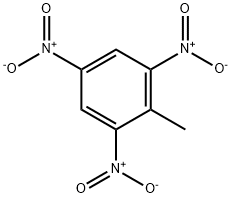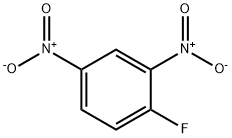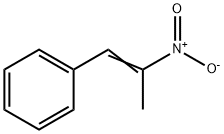2-Nitropropane
Synonym(s):2-(1,8-naphthyridin-2-yl)-Phenol
- CAS NO.:79-46-9
- Empirical Formula: C3H7NO2
- Molecular Weight: 89.09
- MDL number: MFCD00007397
- EINECS: 201-209-1
- Update Date: 2025-09-25 17:15:13

What is 2-Nitropropane?
Description
2-Nitropropane also known as dimethylnitromethane or isonitropropane is a colourless, oily liquid with a mild and sweet odour. It is flammable and soluble in water. It is also soluble in many organic solvents including chloroform. Its vapours may form an explosive mixture with air. It is used as a cosolvent in paints to improve pigment wetting, flow properties, and electrostatic processing; it also reduces the paint drying time.
Chemical properties
2-Nitropropane, also known as 2-NP, is an aliphatic nitro compound that appears as a colourless, flammable liquid with a mild fruity odour. It can dissolve in water (1.7 mL/100 mL at 20C) and is miscible with organic solvents.
Like other nitroalkanes, 2-nitropropane exists in equilibrium with 2-propane nitronic acid (HSDB 1988). A 0.01 M aqueous solution of 2-NP has a pH of 6.2. When reacted with inorganic bases and amines, 2-nitropropane forms salts that are flammable when dry. It is sensitive to detonation when combined with oxidizers, and a mixture of 2-nitropropane and ammonium nitrate serves as a commercial explosive.
Physical properties
Colorless, oily liquid with a mild, fruity odor. 2-Nitropropane was detected in two studies at concentrations of 3.1 and 5.2 ppmv (Crawford et al., 1984).
The Uses of 2-Nitropropane
2-Nitropropane is primarily used as a solvent for organic compounds and coatings; with vinyl resins, epoxy paints, nitrocellulose, and chlorinated rubber; in printing inks, adhesives, and printing as flexographic inks; maintenance with traffic markings on roads and highways; shipbuilding; and general maintenance. It also has limited use as a paint and varnish remover. 2-Nitropropane is also used as a solvent in food processing industries for fractionation of a partially saturated vegetable oil.
Definition
ChEBI: 2-nitropropane is a secondary nitroalkane that is propane in which a hydrogen at position 2 has been replaced by a nitro group. Mainly used as a solvent (b.p. 120℃). It has a role as a hepatotoxic agent, a carcinogenic agent, a polar aprotic solvent and a xenobiotic.
Preparation
The synthesis of 2-nitropropane can be accomplished directly by nitration of 2-halopropanes with sodium nitrite. With 2-iodopropane, the reaction is carried out in dry DMF in the presence of urea. For the slower reacting 2-bromopropane, a longer reaction time and the presence of phloroglucinol as a nitrite ester scavenger is required.
Like 1-nitropropane, 2-nitropropane is also produced by vapor-phase nitration of propane with nitric acid at elevated temperature and pressure (Baker and Bollmeier 1978).
General Description
2-Nitropropane is a clear, colorless liquid with a pleasant odor that is soluble in many organic solvents, including chloroform. Its vapors may form an explosive mixture with air.
Air & Water Reactions
Highly flammable.
Reactivity Profile
2-Nitropropane is sensitive to heat. Can react with amines/heavy metal oxides, strong acids, strong alkalis, and chlorosulfonic acid. . The heat of adsorption of 2-Nitropropane on carbon, such as that found in cartridge respirators, is extremely high. Metal oxide catalysts, such as copper oxide or manganese oxide, can initiate ignition, therefore carbon respirators should not be used in environments that have a high vapor concentration of 2-Nitropropane.
Health Hazard
2-Nitropropane is a lung irritant. The acute effects of exposure to 2-nitropropane at 20-45 p.p.m. on workmen were anorexia, nausea, vomiting, diarrhea and severe occipital headache. Liver effects have been observed in animals chronically exposed to 2-nitropropane by inhalation.
Carcinogenicity
2-Nitropropane was classified by the International Agency for Research on Cancer (IARC) as Group 2B, possibly carcinogenic to humans, based on animal studies linking exposure to liver cancer in rats.The carcinogenicity of 2-nitropropane in humans was not evaluated due to the lack of adequate epidemiological data.
Environmental Fate
Photolytic. Anticipated products from the reaction of 2-nitropropane with ozone or OH radicals in the atmosphere are formaldehyde and acetaldehyde (Cupitt, 1980).
Shipping
UN2608 Nitropropanes, Hazard Class: 3; Labels: 3-Flammable liquid.
Purification Methods
Purify it as for nitromethane. [Beilstein 1 IV 230.]
Toxicity evaluation
DNA damage can cause 2-NP metabolites such as N-isopropyl hydroxylamine (IPHA) and hydroxylamine-O-sulfonic (HAS) acid by a reactive oxygen generating process that can be inhibited by free hydroxyl radical scavengers, catalase, and deferoxamine mesylate, an iron chelating agent. IPHA causes DNA damage at thymine and HAS most frequently induces DNA damage at 5'-TG-3', 5'-GG-3', and 5' -GGG-3' sequences. Formation of 8-oxodesoxyguanine by IPHA or HAS increased in the presence of metal ions.DNA damage caused by 2-NP metabolites plays an important role in mutagenicity and carcinogenicity of 2-NP. The liver damage induced by 2-NP is related to oxidative damage and reduction in catalase (CAT) activity.
Incompatibilities
1-Nitropropane, a nitroparaffin compound, forms explosive mixture with air. Contact with heavy metal oxides may cause decomposition. Mixtures with hydrocarbons are extremely flammable. Attacks some plastics, rubber and coatings. May explode on heating. Violent reaction with strong bases; strong acids and metal oxides. Shock-sensitive compounds are formed with acids, amines, inorganic bases and heavy metal oxides. Incompatible with strong oxidizers, combustible materials. 2-Nitropropane reacts with activated carbon causing decomposition. This reaction may occur in activated carbon respirator filters.
Waste Disposal
Incineration: large quantities of material may require nitrogen oxide removal by catalytic or scrubbing processes. Dilute with pure kerosene and burn with care as it is potentially explosive. Consult with environmental regulatory agencies for guidance on acceptable disposal practices. Generators of waste containing this contaminant (≥100 kg/mo) must conform with EPA regulations governing storage, transportation, treatment, and waste disposal.
Properties of 2-Nitropropane
| Melting point: | -93 °C |
| Boiling point: | 120 °C(lit.) |
| Density | 0.992 g/mL at 25 °C(lit.) |
| vapor density | ~3 (vs air) |
| vapor pressure | ~13 mm Hg ( 20 °C) |
| refractive index | n |
| Flash point: | 99 °F |
| storage temp. | Flammables area |
| solubility | H2O: slightly soluble |
| form | Liquid |
| pka | pK1:7.675 (25°C) |
| color | Colorless to Almost colorless |
| Water Solubility | 1.7 g/100 mL (20 ºC) |
| Merck | 14,6628 |
| BRN | 1740684 |
| Henry's Law Constant | 8.92 at 20.00 °C, 15.3 at 30.00 °C, 24.4 at 40.00 °C, 36.9 at 50.00 °C (inert gas stripping, Bene?
and Dohnal, 1999) |
| Exposure limits | Potential occupational carcinogen. NIOSH REL: IDLH 100 ppm; OSHA PEL:
TWA 25 ppm (90 mg/m3); ACGIH TLV: TWA 10 ppm (adopted). |
| Dielectric constant | 25.5 |
| Stability: | Stable. Incompatible with strong oxidizing agents, strong bases, copper. |
| CAS DataBase Reference | 79-46-9(CAS DataBase Reference) |
| NIST Chemistry Reference | Propane, 2-nitro-(79-46-9) |
| IARC | 2B (Vol. 29, Sup 7, 71) 1999 |
| EPA Substance Registry System | 2-Nitropropane (79-46-9) |
Safety information for 2-Nitropropane
| Signal word | Danger |
| Pictogram(s) |
 Flame Flammables GHS02  Skull and Crossbones Acute Toxicity GHS06  Health Hazard GHS08 |
| GHS Hazard Statements |
H226:Flammable liquids H302:Acute toxicity,oral H331:Acute toxicity,inhalation H341:Germ cell mutagenicity H350:Carcinogenicity H412:Hazardous to the aquatic environment, long-term hazard |
| Precautionary Statement Codes |
P202:Do not handle until all safety precautions have been read and understood. P210:Keep away from heat/sparks/open flames/hot surfaces. — No smoking. P273:Avoid release to the environment. P301+P312:IF SWALLOWED: call a POISON CENTER or doctor/physician IF you feel unwell. P308+P313:IF exposed or concerned: Get medical advice/attention. |
Computed Descriptors for 2-Nitropropane
2-Nitropropane manufacturer
JSK Chemicals
New Products
Indole Methyl Resin tert-butyl 9-methoxy-3-azaspiro[5.5]undecane-3-carboxylate Boc-His(Boc)-OH 2-CTC Resin 4-Chloro-7-tosy1-7Hpyrrolo[2,3-d]pyrimidine 5,7-Dibromo-1H-indole 2,5-dichloro-N-hydroxy-4,6-dimethylpyridine-3-carboximidamide 2,2-Dimethoxy-7-azaspiro[3.5]nonane hydrochloride 4-chloromethyl-5-methyl-1,3-dioxol-2-one (DMDO-Cl) R-2-BENZYLOXY PROPIONIC ACID 1,1’-CARBONYLDIIMIDAZOLE 1,1’-CARBONYLDI (1,2-4 TRIAZOLE) N-METHYL INDAZOLE-3-CARBOXYLIC ACID 4-((2-hydroxyethyl)thio)benzoic acid 1-(TERT-BUTOXYCARBONYL)-2-PYRROLIDINONE Methyl 6-methylnicotinate 3-Pyridineacrylic acid tert-Butyl carbazate TETRAHYDRO-2H-PYRAN-3-OL 2-((4-morpholinophenylamino) (methylthio) methylene) malononitrile 3-(4-morpholinophenylamino)-5-amino-1H-pyrazole-4-carbonitrile 2,4-dihydroxybenzaldehyde 1,3-Diethyl-1,3-Diphenylurea Methyl 2-methylquinoline-6-carboxylateRelated products of tetrahydrofuran








You may like
-
 2-Nitropropane 98%View Details
2-Nitropropane 98%View Details -
 2-Nitropropane, 95% 79-46-9 99%View Details
2-Nitropropane, 95% 79-46-9 99%View Details
79-46-9 -
 2-Nitropropane CAS 79-46-9View Details
2-Nitropropane CAS 79-46-9View Details
79-46-9 -
 2-Nitro propane CAS 79-46-9View Details
2-Nitro propane CAS 79-46-9View Details
79-46-9 -
 2-Nitropropane CAS 79-46-9View Details
2-Nitropropane CAS 79-46-9View Details
79-46-9 -
 Pyridine 99.5% HPLC /UV SpectroscopyView Details
Pyridine 99.5% HPLC /UV SpectroscopyView Details
110-86-1 -
 Dibutyl PhthalateView Details
Dibutyl PhthalateView Details
84-74-2 -
 Thiourea 99% ARView Details
Thiourea 99% ARView Details
62-56-6
